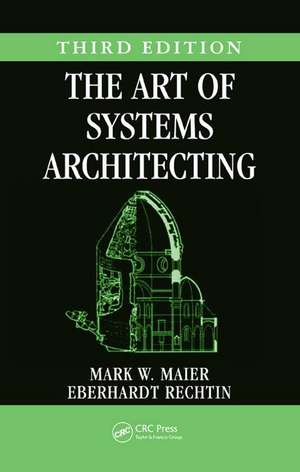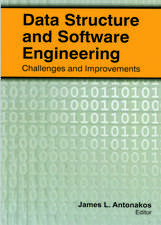The Art of Systems Architecting: Systems Engineering
Autor Mark W. Maier, Eberhardt Rechtin (deceased)en Limba Engleză Hardback – 6 ian 2009
New in the Third Edition:
- Five major case studies illustrating successful and unsuccessful practices
- Information on architecture frameworks as standards for architecture descriptions
- New methods for integrating business strategy and architecture and the role of architecture as the technical embodiment of strategy
- Integration of process guidance for organizing and managing architecture projects
- Updates to the rapidly changing fields of software and systems-of-systems architecture
- Organization of heuristics around a simple and practical process model
Extensively rewritten to reflect the latest developments, the text explains how to create a system from scratch, presenting invention/design rules together with clear explanations of how to use them. The author supplies practical guidelines for avoiding common systematic failures while implementing new mandates. He uses a heuristics-based approach that provides an organized attack on very ill-structured engineering problems. Examining architecture as more than a set of diagrams and documents, but as a set of decisions that either drive a system to success or doom it to failure, the book provide methods for integrating business strategy with technical architectural decision making.
| Toate formatele și edițiile | Preț | Express |
|---|---|---|
| Paperback (1) | 307.25 lei 3-5 săpt. | +25.87 lei 6-12 zile |
| CRC Press – 30 iun 2021 | 307.25 lei 3-5 săpt. | +25.87 lei 6-12 zile |
| Hardback (1) | 754.22 lei 3-5 săpt. | +30.22 lei 6-12 zile |
| CRC Press – 6 ian 2009 | 754.22 lei 3-5 săpt. | +30.22 lei 6-12 zile |
Preț: 754.22 lei
Preț vechi: 942.76 lei
-20% Nou
144.32€ • 154.33$ • 120.33£
Carte disponibilă
Livrare economică 28 martie-11 aprilie
Livrare express 13-19 martie pentru 40.21 lei
Specificații
ISBN-10: 1420079131
Pagini: 472
Ilustrații: 44 black & white illustrations, 6 black & white tables
Dimensiuni: 156 x 234 x 30 mm
Greutate: 0.79 kg
Ediția:Revizuită
Editura: CRC Press
Colecția CRC Press
Seria Systems Engineering
Public țintă
Undergraduate and Undergraduate CoreCuprins
Descriere
If engineering is the art and science of technical problem solving, systems architecting happens when you don’t yet know what the problem is. The third edition of a highly respected bestseller, The Art of Systems Architecting provides in-depth coverage of the least understood part of systems design: moving from a vague concept and limited resources to a satisfactory and feasible system concept and an executable program. The book provides a practical, heuristic approach to the "art" of systems architecting. It provides methods for embracing, and then taming, the growing complexity of modern systems.
New in the Third Edition:
- Five major case studies illustrating successful and unsuccessful practices
- Information on architecture frameworks as standards for architecture descriptions
- New methods for integrating business strategy and architecture and the role of architecture as the technical embodiment of strategy
- Integration of process guidance for organizing and managing architecture projects
- Updates to the rapidly changing fields of software and systems-of-systems architecture
- Organization of heuristics around a simple and practical process model
A Practical Heuristic Approach to the Art of Systems Architecting
Extensively rewritten to reflect the latest developments, the text explains how to create a system from scratch, presenting invention/design rules together with clear explanations of how to use them. The author supplies practical guidelines for avoiding common systematic failures while implementing new mandates. He uses a heuristics-based approach that provides an organized attack on very ill-structured engineering problems. Examining architecture as more than a set of diagrams and documents, but as a set of decisions that either drive a system to success or doom it to failure, the book provide methods for integrating business strategy with technical architectural decision making.



























